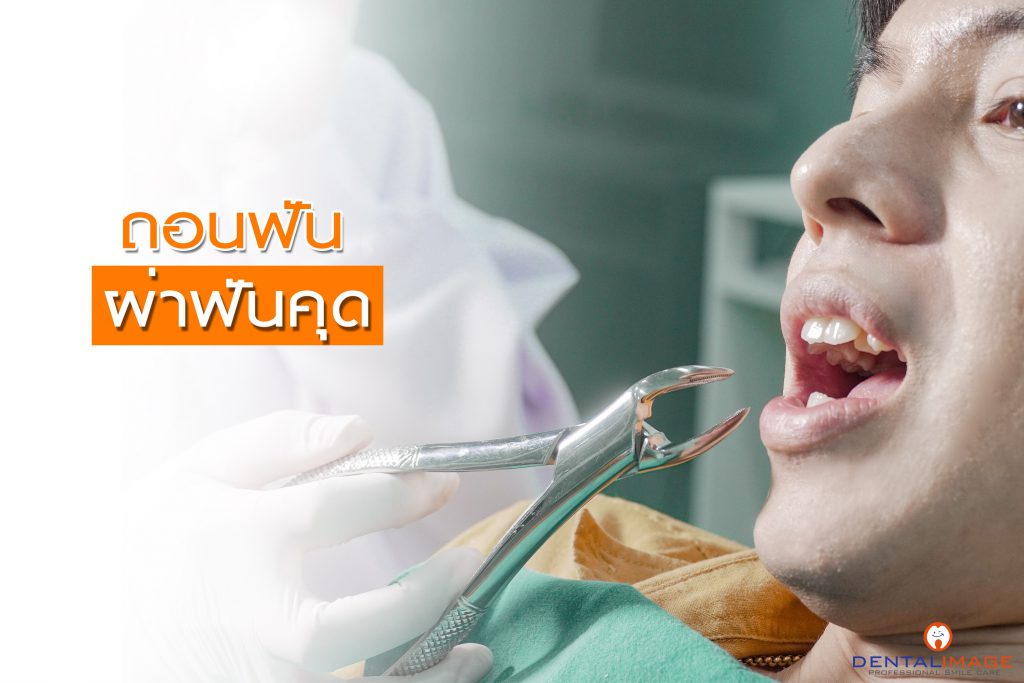
Oral surgery
Wisdom tooth extraction.
Wisdom teeth are the last set of molars that often cannot grow normally. They may partially emerge or remain completely impacted, causing them to be embedded in the jawbone at various angles, such as sideways or tilted. They typically appear between the ages of 18-20. Many people who visit a dentist and are found to have impacted wisdom teeth will be advised to have them extracted or surgically removed, even if there are no symptoms. This is because if left untreated, these teeth cannot emerge properly and may cause various issues such as:
- Accumulation of tartar and bacteria in the gum pockets
- Increased risk of decay in adjacent teeth due to difficulty in cleaning
- Development of cysts or tumors in the gums
- Potential for pain, swelling, and infection
- Gum and jaw diseases
Symptoms that occur when wisdom teeth begin to emerge from the gums
- Pain in the gum area
- Inflammation and infection
- Facial swelling
- Swollen gums around the surgical site
Early surgical intervention helps avoid various problems that may occur later.
Steps in wisdom tooth extraction
- The dentist will take an X-ray of the mouth to determine the position of the tooth, then administer anesthesia
- Prepare the area for surgery by applying local anesthesia and waiting for it to take effect
- Surgical procedure
- Incision in the gum
- Extraction of the impacted tooth
- Suturing the wound closed
- The dentist will provide instructions and guidelines for post-operative care
Tooth extraction
This procedure is performed when a tooth can no longer be saved. The dentist will recommend extraction and replacement with a new tooth, which is usually the last option suggested. The main reasons for tooth extraction are:
- Severe tooth decay reaching the dental pulp
- Advanced gum disease
- Irreparable tooth fracture
- Issues with tooth position or eruption that the dentist deems necessary for extraction, such as impacted teeth
- Preparation for orthodontic treatment
Post-operative instructions and guidelines after wisdom tooth extraction or tooth removal.
- Apply an ice pack for about 30 minutes immediately after surgery
- Bite down firmly on gauze for about 1 hour to control bleeding. Replace with fresh gauze as needed until bleeding stops
- Avoid using mouthwash within 6 hours after tooth extraction
- In case of minor bleeding, rinse with cold salt water and hold it in your mouth for a moment
- Avoid rinsing your mouth within 12 hours after extraction
- You can rinse your mouth with salt water (1 teaspoon of salt + 1 cup of warm water) 12 hours after tooth extraction
- You can brush your teeth as usual but be careful around the wound area
- Eat soft, cool foods with mild flavors for the first 2-3 days
- Avoid smoking and drinking alcohol
- Post-extraction pain can be managed with pain medication prescribed by the dentist
Bone augmentation
Bone grafting is an important dental procedure that can help address dental problems caused by insufficient jawbone volume. It’s used in cases such as titanium dental implant placement or to correct facial abnormalities.
Today, bone grafting has become increasingly important, almost becoming a standard preparatory step before dental implant surgery. This is because many patients seeking titanium dental implants often have insufficient jawbone volume to support the implants. This is typically due to bone deterioration that occurs after losing teeth in that area for an extended period. In some cases, jawbone deterioration can even affect a person’s facial structure.
In the past, addressing bone volume issues for titanium dental implants was challenging. However, with current technological advancements, bone grafting can now be performed through less complex procedures to achieve the desired size and volume. This significantly enhances the stability of titanium dental implants.


 TH
TH